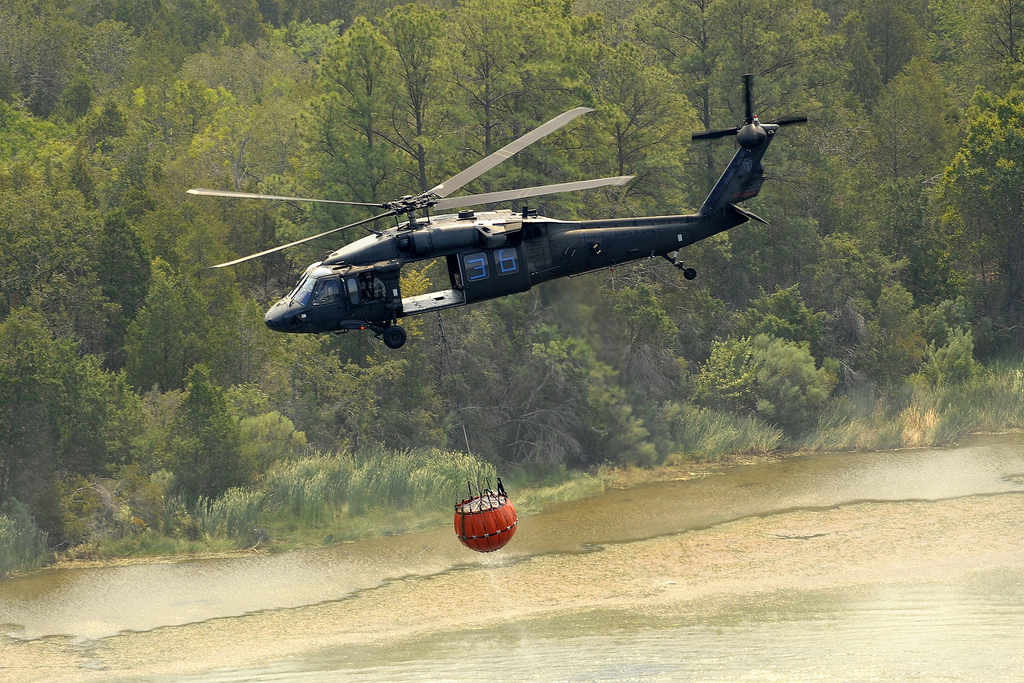

Briefing: the Southern US drought: Analysing the 2011 drought in 13 southern US states
In April 2011 the governor of Texas and presidential hopeful Rick Perry asked that his fellow Texans begin praying for ""the healing of our land"" and an end to the drought. Unfortunately divine intervention was not forthcoming and the drought continued to worsen""ó¢by late June nearly three quarters of the state was experiencing exceptional drought conditions that persisted until the end of the summer. Texas experienced its driest 12 month period on record (August 2010 to July 2011), with crop and livestock losses estimated at $5.2 billion. It was not only Texas that was affected. The 2011 Southern US Drought afflicts 13 southern states: Texas, Oklahoma, Kansas, Colorado, New Mexico, Arizona, Louisiana, Arkansas, Mississippi, Alabama, Georgia, South Carolina, and North Carolina. Drought conditions stretch in a huge arch extending across the southern states from Arizona to Florida, with the three hardest-hit states, with all or almost all territory experiencing drought conditions, being Louisiana (100% in drought), Texas (96%), and New Mexico (94%). Last year, drought affected just 1% of New Mexico and 7% of Texas.
In Texas, following the Days of Prayer, the proportion of the state affected by the drought rose from a fifth to nearly half of the state within a month; by mid-summer nearly three quarters of Texas had received no rainfall for many months. In Georgia the New York Times reported that, ""the heat and the drought are so bad... that hogs can barely eat. Corn, a lucrative crop with a notorious thirst, is burning up in fields. Cotton plants are too weak to punch through soil so dry it might as well be pavement.'
In highly populated southeastern Florida, seasonal tropical storms create monsoon conditions that are an effective bar to drought conditions. However, this year the monsoon has not happened and Florida has experienced ""exceptional"" drought""ó¢the worst level assigned by the National Drought Mitigation Center. Across Florida, the lack of rain is wilting crops and has brought historically low water levels in one of the state's largest lakes, Lake Okeechobee. Farmers are feeling the bite: Rick Roth who grows sugarcane, corn and rice in Belle Glade told USA Today: ""We're going to be in worse shape next year than we are this year and this year we purely got by by the skin of our teeth.""
Coupled with difficult economic conditions, the drought has brought immense economic hardship""ó¢so much so that comparisons with the Dust Bowl era of the 1930s seem frighteningly apt. USA Today reports that Word War II-style water rationing in Texas has brought residents closer together (the issue is not whether to water the lawn but whether to take a shower), but bitterness and distress caused by the drought is expected to spill over into tension between communities as forecasters predict drought conditions in many places will continue through 2012.
The drought has not only caused a severe lack of water in the southern plains for both businesses and households, but has also resulted in numerous wildfires. The remnants of these exceptionally destructive fires can be viewed as huge charcoal coloured blots on a beige parched landscape in photographs taken by satellites orbiting the earth. A few have been deliberately started, but many fires have been accidents with sparks easily turning into infernos in the hot, paper-dry conditions.
The state authorities may have been slow to react""ó¢a ban on outdoor burning in Texas only came into effect in the aftermath of several large wildfires across the southern states. The Wallow Fire in Arizona was the second largest in its history and properties have been destroyed in several states including Oklahoma, where several hundred homes in Oklahoma City had to be evacuated. The National Interagency Fire Center in Boise, Idaho, reports that wildfires have scorched nearly 4 million acres so far this year. This is more than double the average to this date and represents the highest total acres burned in the past decade. From a meteorological standpoint, the cause of the severe drought conditions is fairly simple: ""A strong La Niña shut off the southern pipeline of moisture,"" said David Miskus, who monitors drought for the National Oceanic and Atmospheric Administration. La Niña is the name given to the cooling phase of Pacific waters. The La Niña event of 2010-11 has caused extreme flooding in many countries all over the world, although in the southern US it is causing extreme drought and desertification.
Desertification of the region is compounded by deforestation, intensive farming and wildfires. Texas has lost most of its forest cover through a combination of logging, farming and lumbering for oil, and this has been calculated using NASA modelling systems to have led to a 25% drop in precipitation. The 'bonanza' years of oil drilling and logging""ó¢the 50 year period following the 1880s""ó¢undoubtedly contributed to, if not directly caused, the 1930s Dust Bowl.
Methods of land use and extensive deforestation are prime contributors to the current crisis. The actions of man have significantly reduced resilience to natural""ó¢albeit unusual""ó¢climatic conditions. Some are pointing to the drought as evidence of global warming. However, it is almost impossible to say at this point whether this individual extreme weather event is part of a larger global trend.
As the debate in the US over the existence and causes of global warming hots up, states are pondering the impact of deforestation and intensive farming. Unwilling and unable to wait for answers that may never be agreed on, scientists and farmers are searching for new water sources and better, more practical ways to utilise and conserve water. What is clear is that existing methods and practices of land and water usage cannot continue with current climatic conditions; new ways of doing things must prevail lest there is a wholesale return of the dust bowl conditions of the 1930s.
"




